
Up until the end of World War II, Japan was a prodigious producer of printed maps and nautical charts. Whether to trace exploration, exercise political control, oversee her vast colonial empire, or execute military operations, maps and charts were a fundamental tool of the imperial state. One of the largest known categories of Japanese maps is known as gaihōzu 外邦図, referring to maps of areas outside Japan proper. Many of these gaihōzu depicted Japanese overseas territories, though far-flung lands not in the administrative sphere are also covered. Included among gaihōzu are reproduced and translated copies of foreign-produced maps.
Overlapping the gaihōzu category are the “Captured Japanese Maps.” These refer specifically to Japanese maps confiscated by the Allied occupation authorities post-war. These include maps of the Japanese homeland. Many copies of such maps were reprinted from original plates for ongoing occupation and geographic intelligence needs. Later, the surplus was distributed to mostly American libraries as a thank-you for contributing to war-time cartographic knowledge.
Japanese nautical charts from the 1920s to 1930s formed the basis for later topographic maps of the 1940s. We have a small collection of these charts and are gradually making them available through our digital repository.
In brief, we refer to all of these as Japanese imperial maps and charts, straddling gaihōzu and “captured maps” categories to show Japan’s vast mapping program of domestic and international territory and waters. The total output of these cartographic resources numbered in the hundreds of thousands, whittled down after deliberate destruction to a few tens of thousands of sheets by the time Japan surrendered to Allied occupation in the late summer of 1945. Japanese academic institutions and libraries own many more thousands of map sheets than do American libraries, though much of the corpus perhaps still remain uncataloged at this writing. Fortunately, an increasing number of institutions in countries rimming the Pacific have scanned their collections making them accessible online, recognizing their importance as historical documents as well as the basis for contemporary studies in the humanities and natural sciences.
A sampling of the approximately 3,000 plus sheets from 1910s to 1940s in the UHM map special collections are now accessible in the library's digital repository eVols.

An equal opportunity institution.
Use of this site implies consent with our Usage Policy.
2550 McCarthy Mall
Honolulu, Hawaii 96822 USA
808-956-7214 (Reference)
808-956-7203 (Circulation)
Library Digital Collections Disclaimer and Copyright information
© University of Hawaiʻi at Mānoa Library